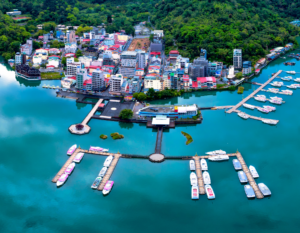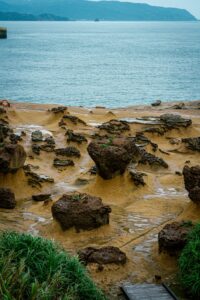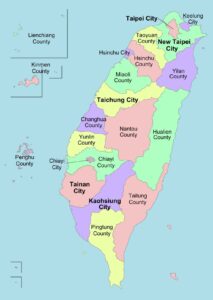Taiwan: A place where rich culture, breathtaking scenery, and warm hospitality come together to create an unforgettable experience.
Taiwan, officially the Republic of China (ROC), was formerly known as Formosa. The largely mountainous island is located between the Strait of Taiwan, the South China Sea and the Philippine Sea, about 370 km (230 mi) north of the Philippines’ main island Luzon and approximately 180 km off the southeastern coast of China. The island shares maritime borders with the People’s Republic of China, Japan, and the Philippines.

Taiwan’s geography and landscape are diverse and captivating, offering a range of natural beauty that includes mountains, coastal areas, forests, and more. running north to south along the spine of the island, the Central Mountain Range includes several peaks over 3,000 meters (9,800 feet) in elevation. Yushan (Jade Mountain) is the highest peak in Taiwan, reaching an elevation of 3,952 meters (12,966 feet). This range contributes to Taiwan’s rugged terrain.
Taiwan has a subtropical climate, with wet and humid summers and milder winters. The mountains experience cooler temperatures and snowfall in higher elevations during winter. And Taiwan have 4 season.
Spring (March to May)

Spring in Taiwan is usually warm with temperatures starting to rise. At the start of the season, there is usually little rain, but the weather gets sunnier and drier as time goes on. In this season, flowers such as cherry blossoms, azaleas, and plum blossoms bloom all over Taiwan, making for a beautiful sight.
Summer (June to August)

Summer in Taiwan tends to be hot and humid. Temperatures can reach 30-35 degrees Celsius, especially in low-lying areas. During summer, Taiwan often experiences heavy rains and cloudy weather. Summer is also the school holiday season in Taiwan, so tourist spots are often busier.
Autumn (September to November)

Autumn in Taiwan brings mild weather and coolness after the hot summers. The temperature begins to drop, and the air becomes cooler and drier. Autumn is a good time to visit Taiwan’s mountains, as the leaves of the trees turn beautiful colors, creating a stunning view.
Winter (December to February)

Winter in Taiwan tends to be colder, especially in the higher mountainous regions. Temperatures in low-lying areas are usually between 10-20 degrees Celsius, but in the mountains, temperatures can drop below freezing. In winter, especially in February, there are also beautiful lantern festivals held throughout Taiwan.

Taiwan has an internationally recognized high-quality education system. Several universities in Taiwan that are ranked among the world’s best universities offer comprehensive and quality academic programs. And for international students can work part-time for 20 hours/week.


Taiwan is known for its strong emphasis on exports. The country exports a wide range of goods, with electronics and technology products being among the most prominent. Taiwan is a major producer of semiconductors, computer hardware, and electronic components, contributing significantly to global supply chains.

Taiwan is generally considered a safe country for both residents and visitors. The country consistently ranks as one of the safest countries in Asia and even globally. Due to Taiwan’s Low Crime Rate, Manifested Rule of Law, Effective Public Transportation and Effective Law Enforcement.

Sun Moon Lake

Taiwan is home to a variety of natural wonders, from majestic mountains to stunning coastlines and unique geological formations. Here are some famous natural wonders in Taiwan: Taroko Gorge, Alishan, Sun Moon Lake, Yushan (Jade Mountain), Kenting National Park, Yehliu Geopark, Xiaoliuqiu (Little Liuqiu), and Green Island.




